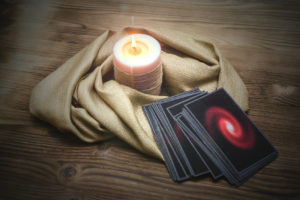Self-Tanners
How do these products work?
Most self-tanners use ingredients called DHA (dihydroxy acetone), which creates a ‘healthy glow’ by chemically reacting with the amino acids in the dead skin layer of the skin’s surface, the stratum corneum. The reaction is safe and non-toxic while not requiring any UV exposure and involves no permanent pigmentation. DHA has been cleared by the FDA for its safety since 1970. When the DHA attaches to amino acids in the skin cell it begins to oxidize; this process is what turns skin a brownish color after a few hours. It resembles the way a cut apple turns brown when it is left exposed to the air.
What is the difference between self-tanning products and gradual tan products?
Self-tanners have a higher concentration of DHA with a darker, deeper skin color in approximately 8 hours. They are also available in various forms for application, even disposable pads. Many moisturizing self-tanners contain erythulose, which is diluted with moisturizing agents and need to be reapplied often.
Does the color produced by self-tanning or spray tanning create a “base tan?”
No, it does not, although it is a very popular myth. You will need to lather on an SPF every few hours. Tanning beds and tanning from self-tanners do not give you a base tan.
How do you get a great indoor tan?
- Shower, exfoliate and moisturize. Drier areas of skin will absorb more color so exfoliation is important. Try using sugar with water as an exfoliation product since it won’t leave any residual oils to prevent an even color.
- Apply the self-tanner immediately after toweling off. Use less when covering areas with thicker skin such as knees, elbows.
- Follow the directions and you will look like you were kissed by the sun.
- Start by putting some product in the palm of one hand, then rub your hands together and start applying on the lower part of one leg working your way up over the thigh. Avoid the knees and feet until there is barely any product left so that you aren’t getting too much in that thicker area.
- Now apply lightly to knees and feet.
- Wash the product off the palms of your hands entirely when finished.
- If you find that there are some areas that are darker, spotty or maybe it looks dirty then try this; in the shower exfoliate that area only enough to lighten it. Try using a buffing pad or a body polish.
- Moisturize after if you are using a light self-tanning product.
Skin Care Home Recipes
Pumpkin is full of zinc, vitamins, and antioxidants so it’s no wonder it can be beneficial on the skin. Here are some recipes for you to try:
Pumpkin Body Scrub
¼ cup pureed pumpkin
¼ cup brown sugar
Apply with a damp cloth, rubbing in circular motions. Rinse with warm water.
Pumpkin Facial Mask (Oily Skin)
¼ cup fresh pumpkin
In seed oil
1 tbs. apple cider vinegar
1 egg yolk
Mix all ingredients. Apply to clean skin, leave on for 20 minutes.
Cleanse off with warm water.
Pumpkin Facial Mask (Dry Skin)
¼ cup pumpkin
1 tsp. pumpkin seed oil
Splash of milk or cream
Mix all ingredients. Apply to clean skin, leave on for 20 minutes.
Cleanse off with warm water.
Sandi’s Q & A
Q: Why does the waxing person always ask me if I am taking acne medicine?
A: Waxing services are contraindicated for those who are using certain medications or have had certain treatments as the skin would be more likely to suffer a negative effect such as bleeding due to the skin being thinner and more vulnerable to infection. Kudos to your skin care professional for following proper safety protocols.
Q: In the summer my face looks more flushed what can I do for that?
A: The flushing can be the result of a variety things including sun exposure, being over heated, skin product ingredients, foods, the environment or even medications. It would be best for you to have a skin care consult to help determine the cause before treating the symptom.
Q: When I wash my face with soap it feels very dry after. Is that because I scrub it with a washcloth?
A: Unless you are using a facial soap recommended by your health care practitioner I would suggest that you might have better results from a cleanser formulated for your specific skin type. Many are creams or lotions. It might also be beneficial for you to forego scrubbing you face since that can be contributing to the excessive dryness you are experiencing. You didn’t mention how often you are cleaning your face and the frequency may also be something you might want to consider.
Q: Why are so many products using seaweed in them?
A: Algae is the extract that is used. It helps to normalize the skin’s moisture content and it provides suppleness and firmness to the epidermis, the outer layer of skin. It is used by many manufacturers as a substitute for animal-based collagen.
Q: How can turmeric be used to help my skin?
A: Turmeric is known for having healing, tonic, anti-inflammatory and blood-purifying properties. This plant is from the ginger family and is native to southern Asia. It has been used in traditional medicine for many curative purposes including the treatment of eczema, acne, skin infections, ulcers, burns and rashes.
Q: My new face cream has rice bran in it, what is that for?
A: Rice bran is helpful for treating dry, mature skin. It comes in oil, wax and extract forms.
You should always consult with your health care provider before adding any plants, herbs or supplements to your treatment protocol.]]>



